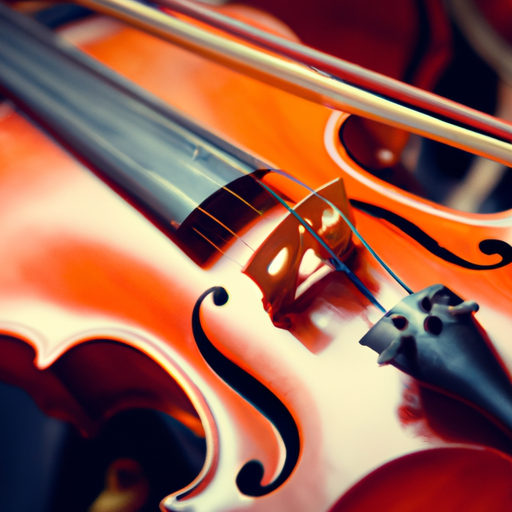
Learning to play the violin is a rewarding and fulfilling journey. Whether you have dreams of performing on stage or simply want to enjoy playing beautiful music, mastering the violin is an important step in your musical development. This article will provide a step-by-step guide for beginners to help you navigate the process of becoming a skilled violinist.

The violin is a versatile instrument that can be played in various genres ranging from classical to folk and even contemporary music. By mastering the violin, you gain the ability to express yourself through music and participate in ensemble performances. The discipline and focus required to learn the violin also helps improve cognitive skills and enhances overall brain development.

In order to become proficient in playing the violin, beginners should follow a structured approach. The key steps to mastering the violin include choosing the right instrument, developing proper posture and holding techniques, learning basic techniques and terminology, establishing a practice routine, understanding music theory and notation, playing scales and exercises, learning songs and pieces, and improving performance techniques.
Choosing the right violin is crucial for beginners as it sets the foundation for a comfortable and enjoyable learning experience. Here are some factors to consider when selecting a violin:
Developing proper posture and holding techniques is essential for beginners to produce a good sound and prevent injuries. Here's why it's important:
Proper posture ensures that your body is in the optimal position to play the violin. It promotes efficient movement and helps prevent strain or discomfort during long practice sessions.
Understanding and practicing basic techniques are fundamental to mastering the violin. Here's what you need to know:
Basic techniques include bowing, fingering, and producing different types of tones. These techniques allow you to play melodies, create dynamics, and express emotions through the violin.
Learning the language and terminology associated with the violin will help you communicate effectively with other musicians and understand musical notation. Some common terms include bowing styles (e.g., legato, staccato), dynamics (e.g., forte, piano), and articulations (e.g., slurs, accents).
Consistency is key when learning any instrument, including the violin. Establishing and following a practice routine will help you progress steadily. Here's why it's important:
Regular practice allows you to reinforce techniques, build muscle memory, and develop a strong foundation. It also helps to improve focus, discipline, and overall musicality.
Having a basic understanding of music theory and notation is essential for any musician. Here's what you need to know:
Music theory provides a framework for understanding how music works. It encompasses concepts such as scales, chords, key signatures, and rhythm, which are essential for reading and interpreting musical notation.
Learning to read sheet music and violin-specific notation is vital for playing songs and pieces accurately. Familiarize yourself with symbols such as notes, rests, time signatures, and dynamics markings.
Playing scales and exercises is a crucial aspect of violin practice. Here's why it's important:
Scales and exercises help develop finger dexterity, bowing techniques, intonation, and overall coordination. They also improve your ability to navigate the fingerboard and play in different keys.
Beginners should start with simple scales such as the A major and D major scales. Additionally, exercises like finger patterns, bowing exercises, and shifting exercises can help build fundamental skills.
Learning songs and pieces is an exciting part of the violin journey. Here's why it's important:
Playing songs and pieces allows you to apply the techniques and skills you have learned. It enables you to engage with different musical styles, express emotions, and build performance confidence.
Developing performance skills is essential for those who aspire to perform in front of an audience. Here's why it's important:
Performance techniques help you convey your musical interpretation effectively and engage with the audience. They include stage presence, dynamics, phrasing, and expressive techniques.
Mastering the violin requires dedication, patience, and consistent practice. By following the steps outlined in this guide, beginners can lay a solid foundation for their violin journey. Remember, progress takes time, so stay motivated, seek guidance when needed, and enjoy the beautiful sounds you create with your violin. Happy playing!